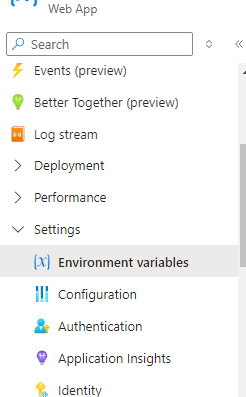Install DotNetEnv
First, add the DotNetEnv package to your project. Right-click your project, then select NuGet Packages, search for DotNetEnv, and install it
Create a '.env' file
Create a .env file in the root of your project directory. Add your connection string and any other environment-specific settings you need.
Example '.env' :
ConnectionStrings__DBCon=YourSecureConnectionString Update program.cs to load environment variables from the '.env' file and integrate them to the configuration
Example 'program.cs' :
using DotNetEnv; // Load .env file DotNetEnv.Env.Load(); //Configure connection string from environment variable var connectionString = Environment.GetEnvironmentVariable("ConnectionStrings__DBCon"); if (string.IsNullOrEmpty(connectionString)) { throw new Exception("Connection string not found. Ensure the .env file is correctly configured and placed in the root directory."); //Add connection string to the applications configuration system builder.Configuration.AddInMemoryCollection(new Dictionary<string, string> { {"ConnectionStrings:DBCon", connectionString } }); Reference Environment Variables in appsettings.json
Modify your appsettings.json to include placeholders for environment variables. These placeholders will be replaced by the values from the .env file when the application runs.
{% raw %}`{ "ConnectionStrings": { "DBCon": "Environment variable not set" }, "Logging": { "LogLevel": { "Default": "Information", "Microsoft.AspNetCore": "Warning" } }, "AllowedHosts": "*" } ``` ### Configure Environment Variables in Azure Step 1: Open the Azure Portal Step 2: In the left-hand menu, select Environment vairables under the Settings section.  Step 3: Add a new setting for each environment variable you need. For example: Name: ConnectionStrings__DBCon Value: your-connection-string-here Then save it. By configuring environment variables in Azure, you ensure your application is secure, flexible, and maintainable. 


Top comments (0)